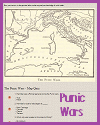| Notice Sign for Classrooms—Printable PDF |
|---|
| www.studenthandouts.com ↣ Classroom Organization ↣ Classroom Signs |
 |
|
Notice Sign—Free to print for classrooms (PDF file). Click here to print. Students taking notice of their classroom environment is important for several reasons, as it contributes to their overall learning experience and well-being. Learning Engagement: Being aware of their surroundings can enhance students' engagement with the learning materials and activities. A well-organized and visually appealing classroom can capture their attention and make learning more interesting. comfort and Well-Being: The classroom environment can significantly impact students' comfort and well-being. When students pay attention to factors like lighting, temperature, seating, and classroom layout, they are better equipped to advocate for adjustments that contribute to their physical and emotional comfort. Organization: Observing the classroom environment helps students become more organized. They can locate and access materials, resources, and supplies efficiently, which reduces wasted time and distractions during lessons and activities. Ownership and Responsibility: Encouraging students to take notice of their classroom environment fosters a sense of ownership and responsibility. When they feel connected to their learning space, they are more likely to treat it with respect and care. Safety Awareness: Students should be aware of safety features and procedures within the classroom. Understanding the location of emergency exits, fire extinguishers, and safety protocols can help ensure their well-being in case of emergencies. Respect for Resources: By paying attention to the resources available in the classroom, such as textbooks, technology, and educational materials, students are more likely to use them responsibly and appreciate their value. Efficiency and Productivity: An organized and functional classroom environment promotes efficiency and productivity. Students who are attuned to the layout and resources can complete tasks more effectively, allowing for better use of instructional time. Creativity and Personalization: Taking notice of the classroom environment can inspire creativity and personalization. Students may suggest or participate in the decoration and arrangement of the classroom, creating a more inviting and conducive space for learning. Respect for Diversity: The classroom environment often reflects the diversity of students' backgrounds and experiences. Paying attention to cultural displays, posters, and classroom materials can promote respect for diversity and inclusion. Environmental Awareness: Educating students about sustainability and environmental stewardship can start in the classroom. By noticing and discussing aspects of the classroom environment related to sustainability, students can develop a greater awareness of environmental issues. Social Interaction: Observing the classroom layout and seating arrangements can help students understand how physical space influences social interaction. They can be more conscious of their own interactions with peers and the teacher. Problem-Solving: Encouraging students to identify aspects of the classroom environment that may hinder their learning or well-being promotes problem-solving skills. They can work collaboratively with teachers to find solutions. communication: Awareness of the classroom environment encourages communication between students and teachers. Students can share their observations and concerns, leading to more effective classroom management and improvements. Cultivating a Growth Mindset: A classroom environment that evolves based on student input can foster a growth mindset. When students see that their feedback and suggestions can lead to positive changes, they become more open to learning and adaptation. Life Skills: Paying attention to the classroom environment cultivates life skills related to organization, observation, communication, and responsibility, which are valuable beyond the classroom. Students who take notice of their classroom environment are more likely to be engaged, comfortable, and responsible learners. Their awareness contributes to a positive and effective learning experience, fosters a sense of ownership, and prepares them to navigate various educational settings and challenges. |
 |  |  |  |  |  |
| www.studenthandouts.com ↣ Classroom Organization ↣ Classroom Signs |














































